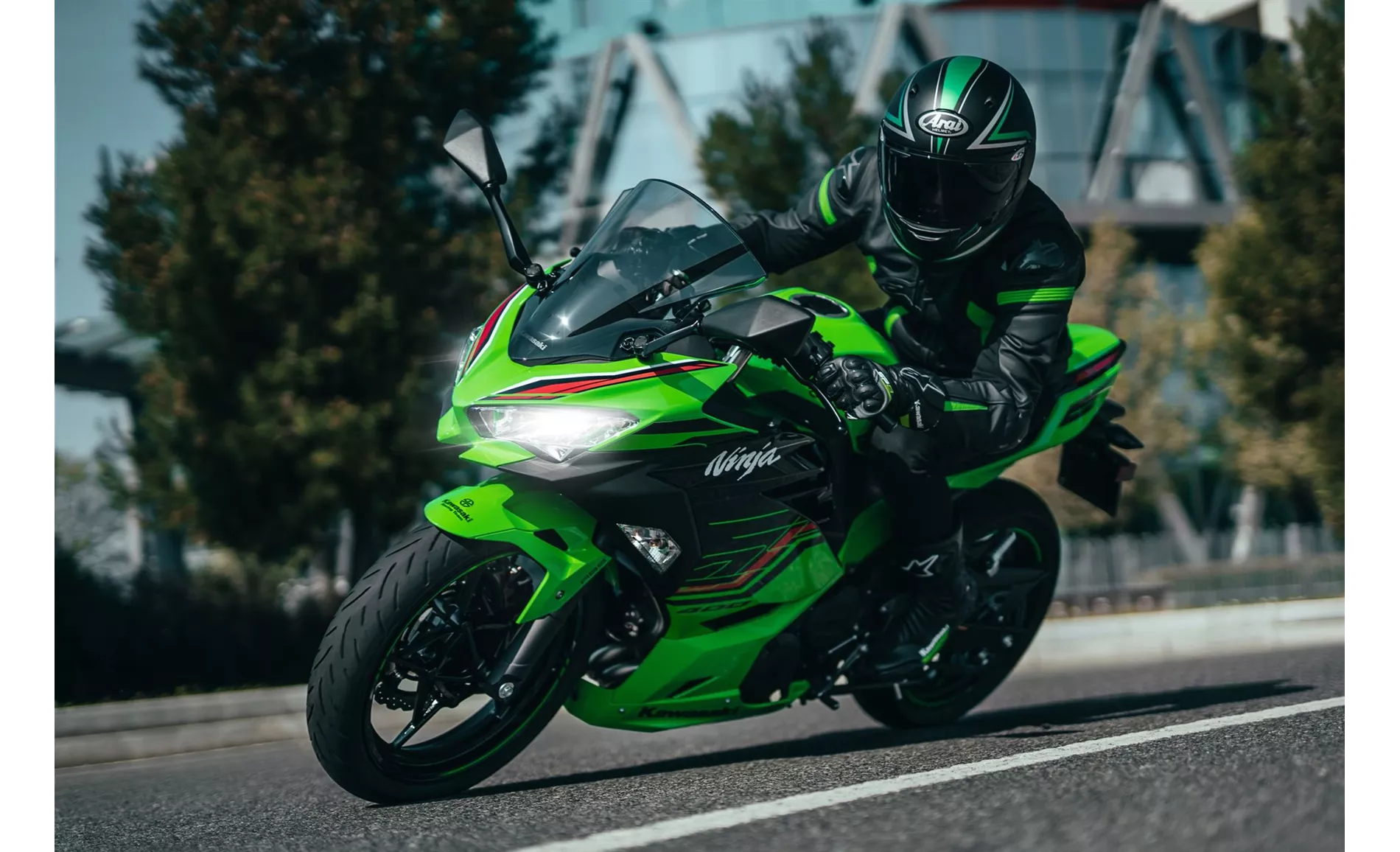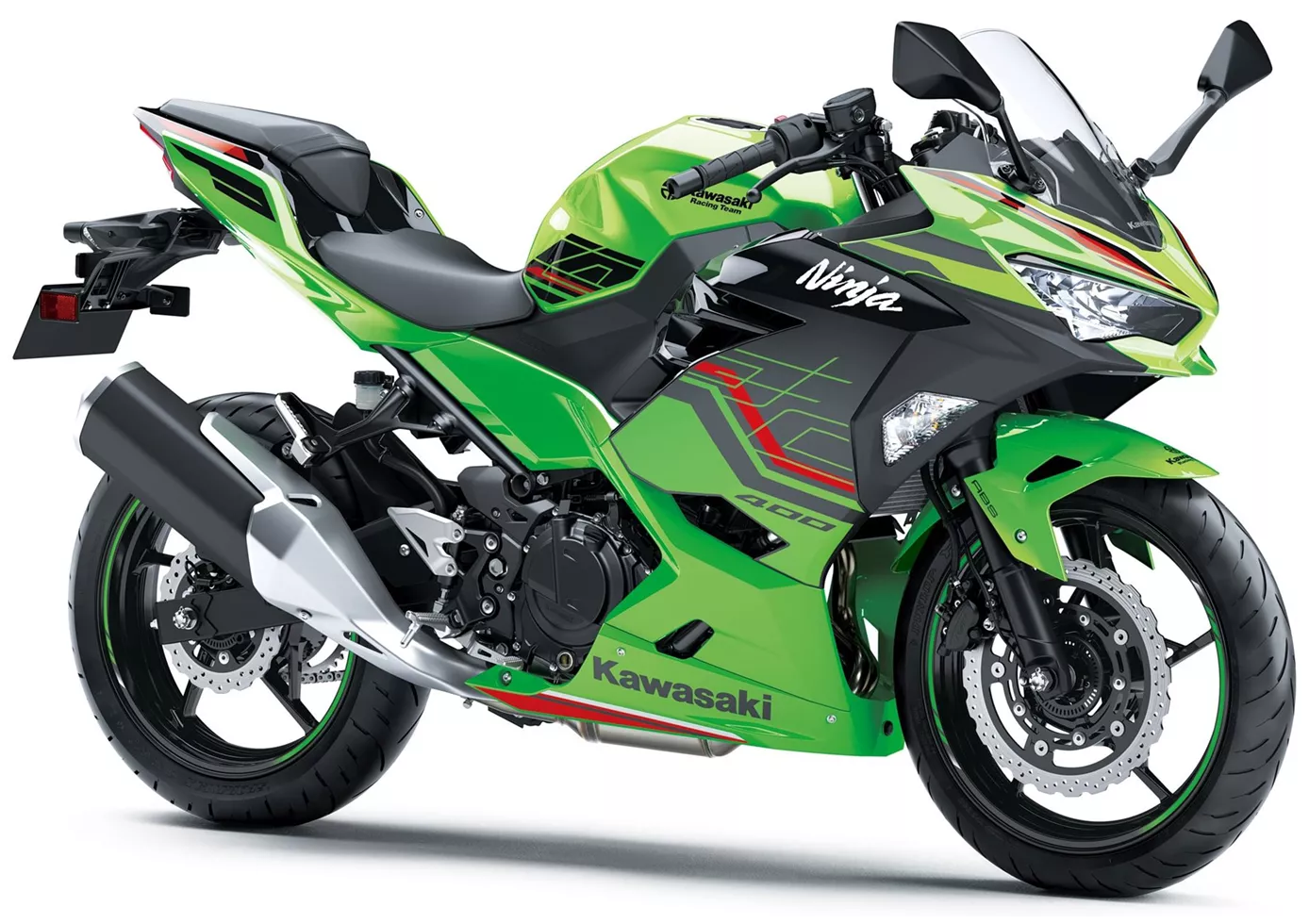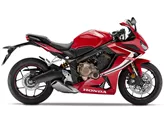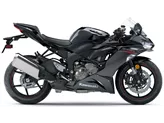Kawasaki Ninja 650 2017 vs. Kawasaki Ninja 400 2023

Kawasaki Ninja 650 2017

Kawasaki Ninja 400 2023
Pregled - Kawasaki Ninja 650 2017 vs Kawasaki Ninja 400 2023
The Kawasaki Ninja 650 model year 2017 and the Kawasaki Ninja 400 model year 2023 are both sporty motorcycles with similar engine types and configurations. However, there are several key differences between the two models.
In terms of engine specifications, the Ninja 650 2017 features a larger bore of 83 mm and stroke of 60 mm, resulting in a higher displacement of 649 ccm compared to the Ninja 400 2023's bore of 70 mm, stroke of 51.8 mm, and displacement of 399 ccm. This translates to a higher engine power of 68.2 HP and torque of 65.7 Nm for the Ninja 650 2017, while the Ninja 400 2023 has a slightly lower engine power of 45 HP and torque of 37 Nm. Additionally, the Ninja 650 2017 has a compression ratio of 10.8, while the Ninja 400 2023 has a higher compression ratio of 11.5.
Both models feature a similar suspension setup with telescopic forks in the front and a swing arm with a monoshock in the rear. The front suspension diameter is also the same at 41 mm. However, there are slight differences in the chassis specifications. The Ninja 650 2017 has a frame type of tubular steel and a rake of 65.5 degrees, while the Ninja 400 2023 also has a tubular steel frame but with a slightly lower rake of 63 degrees. The trail measurement is 100 mm for the Ninja 650 2017 and 92 mm for the Ninja 400 2023.

Kawasaki Ninja 650 2017
In terms of braking, the Ninja 650 2017 is equipped with double disc brakes with a diameter of 300 mm, while the Ninja 400 2023 has a single disc brake with a larger diameter of 310 mm. Both models feature petal technology for improved heat dissipation. Additionally, both models come with ABS as an advanced rider assistance system.
The dimensions and weights of the two models also differ slightly. The Ninja 650 2017 has a front tire width of 120 mm and a rear tire width of 160 mm, while the Ninja 400 2023 has a slightly narrower front tire width of 110 mm and a rear tire width of 150 mm. Both models have a 17-inch front and rear tire diameter. The wheelbase is longer for the Ninja 650 2017 at 1410 mm compared to the Ninja 400 2023's wheelbase of 1370 mm. The seat height is also slightly higher for the Ninja 650 2017 at 790 mm compared to the Ninja 400 2023's seat height of 785 mm. The Ninja 650 2017 is also heavier with a kerb weight of 193 kg compared to the Ninja 400 2023's kerb weight of 168 kg. Both models have a fuel tank capacity of 15 liters for the Ninja 650 2017 and 14 liters for the Ninja 400 2023.

Kawasaki Ninja 400 2023
In terms of strengths, the Ninja 650 2017 is praised for its transparent chassis for sport, playful and good-natured handling, excellent brakes, sharp looks reminiscent of the ZX-10R, and a resilient engine. On the other hand, the Ninja 400 2023 is commended for its good combination of stability and playful handling, robust and reliable appearance, well-controllable engine, wide usable rev range, and pleasant seating position.
However, there are also weaknesses associated with each model. The Ninja 650 2017 is criticized for having little sound from the stock exhaust and slight vibrations from the engine. On the other hand, the Ninja 400 2023 has limited space for larger riders.
In conclusion, the Kawasaki Ninja 650 2017 and the Kawasaki Ninja 400 2023 are both capable sporty motorcycles with their own strengths and weaknesses. The Ninja 650 2017 offers a more powerful engine and slightly larger dimensions, while the Ninja 400 2023 provides a more compact and nimble riding experience. Ultimately, the choice between the two models will depend on the rider's preferences and priorities.
Tehničke specifikacije Kawasaki Ninja 650 2017 u odnosu na Kawasaki Ninja 400 2023
Prednosti i nedostaci u odnosu na
Prednosti i nedostaci u odnosu na
Kawasaki Ninja 650 2017

The Ninja 650 firmly stamps its predecessor (Er-6f). The engine has mastered the Euro 4 hurdle well and serves up a very usable 68 hp, the chassis is simply great for this class, and the weight reduction of 18(!) kilos compared to the ER-6f justifies reverent nods.
Kawasaki Ninja 400 2023

The Ninja 400 offers a lot of riding fun at a manageable price. It offers playful handling without being nervous. The name "Ninja" is a bit of a mouthful, but the range of use is wider than you might think. It rides sportily, but also offers a good riding position for everyday use and touring.
Usporedba cijena Prosječna tržišna cijena Kawasaki Ninja 650 vs Kawasaki Ninja 400
There are a few key differences between a Kawasaki Ninja 650 2017 and a Kawasaki Ninja 400 2023. In terms of price, the actual average price of a Kawasaki Ninja 650 2017 is about 4% higher. Compared to Kawasaki Ninja 400 2023 there are less Kawasaki Ninja 650 2017 bikes available on the 1000PS.de Marketplace, specifically 7 compared to 73. It takes less time to sell a Kawasaki Ninja 650 with 96 days compared to 165 days for a Kawasaki Ninja 400. Since model year 2017 1000PS.de editors have written 20 reviews for the Kawasaki Ninja 650 and 9 reviews for the Kawasaki Ninja 400 since model year 2018. The first review for the Kawasaki Ninja 650 was published on 10/4/2016 and now has more than 79,600 views. This compares to more than 44,300 views for the first review on Kawasaki Ninja 400 published on 11/22/2017.




















